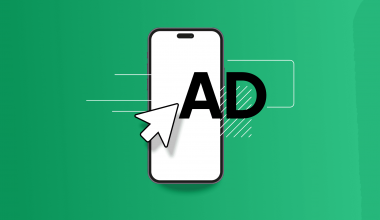You can use infographics, success stories, or blog articles that are generally appealing as the material for your website. Yet, each of these items should be produced in accordance with a unified strategy: your content development strategy. From initial brainstorming and information gathering to dissemination, optimization, and analytics, a complete content development strategy covers every aspect of making and sharing content. Establishing credibility in the eyes of potential customers requires making their experience with your company consistently rewarding. This article gives you a deeper insight into content development SEO, the list of content development tools needed, and the importance of content development. Let’s dive in!
What Is Content Development Strategy
The term “content development” refers to the entire procedure of producing content for a website. There are also people known as “content developers,” who you might have heard of. Although web developers are also referred to as “content developers,” our focus in this article is only on the development of content and not design or programming.
- Strategizing and planning
- Audience and topic research
- Writing and creation of visuals
- Search engine optimization
- Publishing
- Promotion
- Performance tracking
Everything from infographics to movies to blog entries can be used for content marketing (to print, even). Several marketing firms and websites focus on just one or two aspects of content promotion.
Although writing and SEO are essential components, a great content development strategy entails much more (SEO). Just having great content isn’t enough to encourage people to visit your website; you also need a good plan and effective promotion strategies to get people there.
Content Development SEO
In this context, “SEO” refers to the practice of enhancing a website’s visibility in search engines like Google. The essential steps for optimizing your website’s content for search engines are briefly reviewed here.
#1. Keyword Investigation
It’s advisable to conduct keyword research before you begin writing if you want to drive traffic from search engines. This can help you zero in on keywords that have a sizable amount of interest already, allowing you to tailor your content to areas of interest (or discover new keyword niches) that are actively being researched by your target audience.
#2. Optimizing Keywords
If you want your material to be as searchable as possible, know where and how to utilize keywords.
#3. Content Structure
The information on your website ought to be logically arranged. In addition to improving your site’s search engine rankings, this facilitates easy navigation for site visitors looking for similar information. (You want them to spend as much time as possible on your site.)
#4. Advertising Your Content
You may get more eyes on your fresh material by promoting it on social media and getting links pointing to it (both internally and from external sites) It’s crucial also to remember that if search engine traffic is your main objective, your outcomes will likely suffer. You need to provide value beyond search engine optimization if you want to delight the search engines (who will reward you with high rankings over time) and your potential clients and returning visitors. Avoid creating “thin” content that works well in search results and garners clicks without adding value for the reader. Websites that support “thin,” low-quality material face the danger of receiving Google penalties; they also frequently have high bounce rates and low conversion rates.
Types of SEO Content
Here are some SEO contents:
- Product pages
- Blog posts
- Articles
- Lists
- Guides
- Videos
- Infographics
- Slideshows
- Glossaries
- Directories
Content Development Tools
You need the correct tools in your content marketing toolbox to increase productivity and broaden the reach of your material. In addition, you’ll require expert knowledge of these programs to effectively organize and direct the production of any digital content.
Creators and marketers have access to hundreds of different tools; spending time determining which ones are most effective requires significant effort. Nonetheless, we’ve compiled a list of fantastic resources that will unquestionably aid you on your content creation journey and make the process more manageable. Here are some content development tools you need:
#1. Hubspot’s Blog Topic Generator
The renowned Hubspot Blog Topic Generator is a tool that may help you come up with catchy titles for your blog posts as well as new topic ideas related to your field.
#2. Hemingway Editor
When it comes to editing and proofreading your work, Hemingway Editor is a must-have. By flagging instances of passive voice, adverbs, too-complicated sentences, and other writing pitfalls, this tool ensures that your final draft is easy to understand and conveys your intended meaning effectively.
#3. Grammarly
The most widely used online grammar checker in the world, Grammarly, has sophisticated grammar-checking features. It highlights misspelled words, incorrect word usage, and alternative vocabulary suggestions to help you write flawlessly.
#4. Portent’s Content Idea Generator
Another effective tool to help you come up with enticing content ideas for your blog entries and entire content marketing plan is Portent’s content idea generator.
#5. Duplichecker
The free online application Duplichecker checks for plagiarism by comparing submitted content to other pieces of information already published online. In the meantime, it gives you a comprehensive report on how much of your content was plagiarized and where it was found.
#6. Google Trends
When you want to know how popular a certain search term has been over time and how often it has been used, Google Trends is a great resource.
#7. Buzzsumo
If you’re a content writer looking for inspiration for your next piece, Buzzsumo is a simple yet effective tool. To find inspiration for your next piece of original content, simply conduct a search using a topic, and you’ll be presented with a selection of the most-read articles and videos related to that subject.
Steps to Successful Content Development
These are some steps to follow to get a successful content development;
#1. Goal Setting
If you want to stop using meaningless platitudes in your material, you must give each of your thoughts a monetary worth. Begin by making some straightforward inquiries about yourself. For instance, “why is this content important?” If the answer to any of these questions is “educates” or “solves a problem,” then you may be looking at content that either exposes your product as a viable solution or encourages readers to begin interacting with it.
Some additional questions to ponder are as follows:
- Where do you plan on publishing this?
- In terms of knowledge, how advanced is your ideal clientele?
- The question is, what will set this material out from the rest?
#2. Audience Research
Making a buyer persona profile, which should be based on extensive customer analysis, is the simplest approach to putting the data about your prospects together. Save unnecessary time and effort spent on data collection by first sketching up a profile template. You can then zero in on the qualities that truly matter to you.
#3. Storytelling
Take a look at your brand’s history and core values to see what sets you apart. If you use this strategy, your content will stand out more. A prospect’s interest and motivation in continuing a relationship are sparked by the story.
Advice on Storytelling:
- People are seeking something unique in a sea of similar writings and websites, so be authentic.
- Attempt to leave a good impression by always being cordial and truthful.
- Don’t try to sell too much, and instead give your customers something of worth in exchange for their money.
#4. Funnel Analysis
Every bit of content is made not just with an end in mind, but also with a particular step of the sales process in mind. Why so? For the simple reason that consumer behavior varies greatly depending on whether or not they are already familiar with your brand and willing to make a purchase.
As a result, a Call to Action (CTA) for a product published on a blog post that is instructional and at the top of the funnel (TOFU) won’t function the same as a CTA placed on a product landing page at the bottom of the funnel (BOFU). Also, there are many formats that are most effective at various stages.
#5. Strategize
At the beginning of the content marketing process, we develop the content strategy and the editorial calendar. At first, you should make sure to publish two or more lengthy blog posts a month on a topic with the potential to go viral. Naturally, in your specific field. This isn’t a conversation about the next internet sensation.
Recalling our strategies for conducting subject analysis, one option is to zero in on a specific facet of a dominant industry theme. Write an essay about egg substitutes if you work for a cookbook publisher during a time when the market is exploding over the search for less expensive eggs. I think you understand what I mean. Now go make this eggless cooking guide the best one ever written. You’ll gain an advantage over your rivals on that theme and gain traffic if you can get your foot in the back door.
To quickly increase your organic traffic, try to focus primarily on awareness-related material during the first 3–4 months. If you want to increase your audience and conversion rates, you should focus on thought leadership and sales-centric content. If you post at least two pieces of awareness content each month, you could also start with them from scratch.
#6. Briefing
Since that internal writers can contact you at any moment for information, briefing internal writers appears simpler than briefing external ones. Yet authors can’t go into their readers’ heads and figure out what they’re thinking. A better result can be anticipated if a more thorough brief is developed.
#7. Writing
Writing is a normal activity as well, and it deserves respect. Grammar checks, keyword analysis, and content performance optimization are just a few of the well-known best practices. To achieve the latter, it is helpful to use informative headings, incorporate lists, and make use of images. The most important thing to keep in mind, though, is that writing is a multi-stage procedure.
Start by outlining the text, estimating the number of words, and deciding on the voice, and then keep to this outline as you write. This process can be streamlined with the use of tools like SEO Writing Helper, which can also evaluate how readable and SEO-friendly your text is.
Suggestions for Authors:
- It’s important to write for your audience’s education level, therefore check your readability score to see if your texts are accessible. Use headings (H1, H2, and H3) to make the structure of the content more clear to the reader.
- Use spell checkers and other proofreading tools to make sure your writing is error-free and flows properly.
- Don’t confuse the reader by switching back and forth between informal and formal language; doing so could put them on edge.
#8. Optimize & Publish
Following the authoring stage, we proceed to search engine optimization and publication. At this stage, we think about things like readability, word count, relevant keywords, and more to make the text more appealing to search engines (and people!).
If you really want to go off the deep end, find out more about TF-IDF, one of our preferred optimization techniques. I can’t even begin to fathom how difficult that is. Indeed, indeed. But it is incredibly useful for letting Google know if you’ve covered all the bases in your writing. When working on the optimization and publishing phase, we will also write title tags and meta descriptions with the goal of boosting clickthrough rates.
#9. Promote
There are countless ways to advertise outstanding material, but social media is by far the most popular. Don’t overlook the power of email marketing, and think about republishing platforms as well. Backlinks are extremely valuable in search engine optimization, so promoting a post isn’t only about reaching a wider audience.
Thus, you should never buy backlinks. It’s not worth the risk of a Google penalty (which might result in the complete removal of your site from Google search results, or at least a significant drop in rankings).
#10. Tracking
More work must go into monitoring the performance of your content than simply enjoying the results of your accomplishments and reevaluating your missed opportunities.
These two overlapping cycles should form the basis of your tracking system; performance statistics and predictions, as well as reviewing and upgrading your current content.
Importance of Content Development
The most important thing to remember about content development is the time and money it may help you save. Here is some importance of content development:
- Time. Deadlines can be met, and stress and burnout can be avoided, with a little bit of forward planning.
- Effort. Only material that is well-researched and specifically designed to help you achieve your business objective will be created.
- Money. In order to maximize your return on investment (ROI), you will tweak your content, pick your promotional channels with care, and track the success of each individual piece.
Having an established procedure in place may be summed up as a content development strategy.
Improving Your Existing Content Development Process
The following are steps to improve your existing content development process;
- Record your current approach and procedure, examine any potential bottlenecks, and provide suggestions for changes.
- Bring your team together and work on the documented content development process, not the content itself. Make room for them on the editorial calendar, set up regular brainstorming sessions, and figure out a way to combine data about your customers with your ideas for articles. Likewise, you should assess your content team and see if any changes need to be made, such as adding more individuals.
- Create a list of your company’s objectives and metrics, then segment the list for each content marketing campaign objective. In this case, monetary compensation is just one indicator. Other objectives that can be accomplished with content include lead generation, mentions, referrals, and customer involvement.
- Evaluate the completed and future material. In order to better see where the gaps are, it should be audited and then separated out into the various stages of the funnel. Have you implemented an adequate number of methods for attracting new users? Consider gated content and numerous tools for expanding your list at this time (such as newsletter subscription forms).
- Do new research among your target market and evaluate the outcomes against your buyer persona template. Many people’s lives have altered in the post-Covid era, therefore it’s possible you’re making material for the wrong individuals.
- Create a network of respected professionals in your field to boost your credibility and facilitate content creation and promotion.
What Are Content Development Examples?
Authors of whitepapers, e-books, blog articles, case studies, podcasts, business templates, infographics, and videographics are known as content creators.
What Are the Activities of Content Development?
The process of developing new content, which includes generating new forms of communication, is a massive undertaking. The specific actions depend on the content being created but typically include planning, research, writing, editing, design, publishing, A/B testing, and promotion.
What Is the Use of Content Development?
The process of acquiring, organizing, composing, and editing content for publishing is known as content development. Content development refers to the steps taken to ensure that users are provided with accurate and up-to-date information. These steps include the creation of original content, as well as its revision, manipulation, and maintenance.
What Is the Key to Content Development?
The use of attention-grabbing bullet points in content creation is essential. Experts agree that the use of bullet points to highlight key information and benefits is essential when writing persuasive material.
What Are the 5 Steps of Content Development?
Here are the 5 steps of content development:
- Set Content Goals
- Perform Audience Research
- Hone Your Content Strategy
- Write
- Publish and Distribute
Final Thoughts
To accomplish a corporate objective, content development is a full-cycle process that includes content creation, distribution, and auditing. “That goal might be anything from creating trust with your consumers and producing sales.
Related Articles
CONTENT CREATION TOOLS: Top 10 Content Creation Tools
CONTENT CREATION: What It Is Tools Salary & How to Start
21+ BEST SEO COMPANIES IN THE WORLD
MATERIAL MANAGEMENT SYSTEM: Guide To The Material Management Process
SEO WRITING: What Is It, Assistant & Importance






